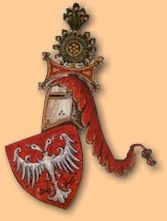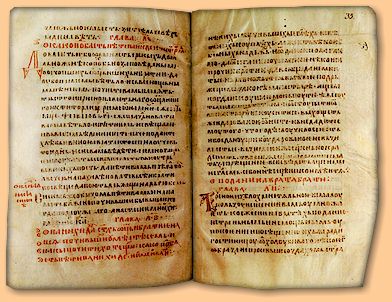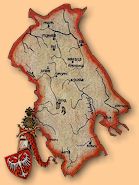|
 |
COAT OF ARMS
DETAILS
Two headed
eagle was adopted from the Byzantine heritage
and soon it became the symbol of Serbian kings
as well of the Serbian state. This symbol can be
seen on a Catalonian map from 1339 and it
represented the capital of Serbian Empire under
Dusan. White royal eagle of the House of
Nemanjics can be seen on fresco in Ljeviska
monastery. |
The
royal house of Nemanjic ruled Serbia from the 12th
century up to 1371. Being kings of Serbia for almost
three centuries, the Nemanjics created one powerful
and organized state, built numerous churches and
monasteries and even wrote some of the greatest
literal works of their time.
Stefan
Nemanja was the founder of the state and his second
son became the very first king of Serbia, while Stefan
himself had the title of the Great Duke. His son
Rastko, went to the monastery and took a name of Sava.
He tried
hard and finally gained independence for the Serbian
Orthodox Church in 1219 and he devoted himself to the
art and faith. He was proclaimed a saint right after
his death; the Turks wanted to suppress every thought
of independence so they burnt his bones in Belgrade in
1594. This act just revived the faith and fight for
the freedom of the Serbs. You can learn more about his
life by reading the translation of the original
document from the 13th century, "The Life of St. Sava"
by Theodosy of Chilandar in the part of the web site
entitled Manuscripts.

Codex of the Chilandar
Monastery written by St. Sava (Prince Rastko Nemanjic)
 On
September 8th 1331, Stefan Dusan was crowned. This
king was a great conqueror and under his rule Serbia
was one of the most powerful and influential European
states (see the map on the right). King Dusan, in 1336
became the emperor of all "Serbs and Greeks", and
proclaimed a Law Codex known as Dusan's Law Codex
which regulated the life within Serbian empire. You
can read those extracts in
Manuscripts section of this web site. On
September 8th 1331, Stefan Dusan was crowned. This
king was a great conqueror and under his rule Serbia
was one of the most powerful and influential European
states (see the map on the right). King Dusan, in 1336
became the emperor of all "Serbs and Greeks", and
proclaimed a Law Codex known as Dusan's Law Codex
which regulated the life within Serbian empire. You
can read those extracts in
Manuscripts section of this web site.
The
very last king from this house was Uros IV, called
'the weak' The rest of the Serbian nobility separated
the country and continued to rule within their
dukedoms.

|
![]()